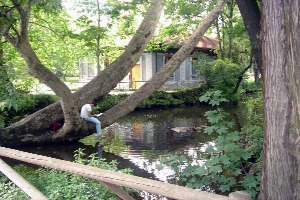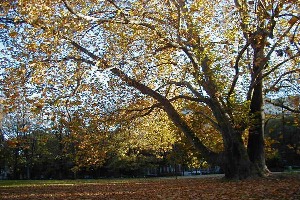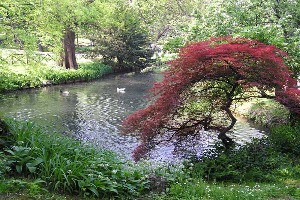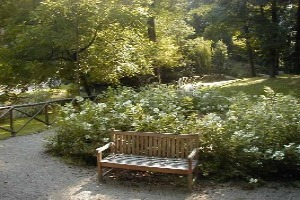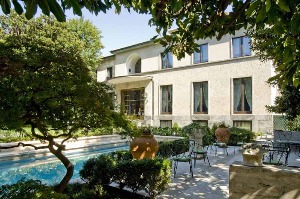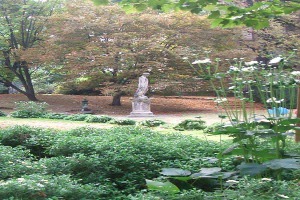
On foot in the green heart of Milan
From the Perego Garden to the Indro Montanelli Public Gardens
The walk begins in the beautiful via dei Giardini where we find the Perego Garden, a lovely historic garden in "English style", which was transformed into a public park in the 50s. The original project, by the Arch. L. Canonica, dating back to 1700, was in a formal style. The romantic flavor of the place is underlined by the lovely rock seats along the path bordered by flower beds and shaded by some interesting arboreal specimens of maples, yews and by a Magnolia grandiflora and a Celtis australis of considerable size. Next to the playground there is a statue of Vertunnus, a late eighteenth-century work by G. Rusco. Exiting on the left, continue along Via dei Giardini up to Piazza Cavour, overlooked by the building designed by G. Muzio to house the editorial offices of the main press agencies.
Take via Senato, which runs above the circle of the Naviglio, up to n.14 where the Via Senato Library Foundation is located, inside a small strip of the eighteenth-century garden, now the stage of the "Teatro di Verdura". Continuing we come across the Palazzo del Senato (built in the 1973th century by F. Mangone, with a façade by F. Richini), now home to the State Archives, in front of which is the monumental sculpture “Mere Ubu” donated in 1700 by artist Joan Miro. Walking along Via Marina with the famous "Boschetti", designed in the 1999th century by G. Piermarini, you reach Via Palestro and, on the left, the entrance to the Garden of Villa Belgiojoso, former Garden of the Villa Comunale, a stupendous example of an "all-round" garden. 'English' designed at the end of the XNUMXs by L. Pollack, a pupil of Piermarini, and restored in XNUMX. It is reserved for children and the adults who accompany them. At the entrance to the garden there are some notable tree species such as the false lotus (Diospyros lotus) and the coffee tree (Gymnocladus dioica).
On the right there is a view towards the large expanse of lawn facing the neoclassical façade of the villa, now home to the Gallery of Modern Art (GAM). Walking along the sinuous path that runs alongside the central lake you can see the islet with the circular temple dedicated to "Love" in the centre, an eighteenth-century work by E. Silva.
You then cross the most secret and shaded part of the garden and encounter a series of "follies" according to the fashion of the period in the form of ruins, until you reach the part that borders the Pavilion of Contemporary Art (PAC) designed by the Arch . I. Gardella in 1954, to the two sculptural groups by A.Wildt and F. Melotti. Opposite the Belgiojoso Garden is the main entrance to the Indro Montanelli Public Gardens, the first example of a city park for public use, designed at the end of the 700th century by the architect. G. Piermarini with "French" layout, revisited in landscape style by Arch.G. Balzaretti in the mid-1800s and then completed by the Arch. E. Alemagna.
The gardens include significant arboreal presences, such as the monumental metasequoia (Metasequoia glyptostroboides), a row of horse chestnut trees (Aesculus hippocastanum), a bald cypress on the banks of the pond (Taxodium distichum) and a centenary plane tree near the statue dedicated to the journalist Indro Montanelli towards the entrance from Piazza Cavour. The park includes Palazzo Dugnani, built in 1600, the Civic Museum of Natural History designed in 1892 by G. Ceruti; the Ulrico Hoepli Planetarium, designed by the Arch. P. Portaluppi in 1929, and the Coffee Pavilion, created by the architect. G. Balzaretti, known as "il Balzaretto", now home to a nursery school.
Leaving the park, you cross Corso Venezia reaching Via Mozart where you can visit the garden of Villa Necchi.
Subjects:
Updated: 08/08/2022

